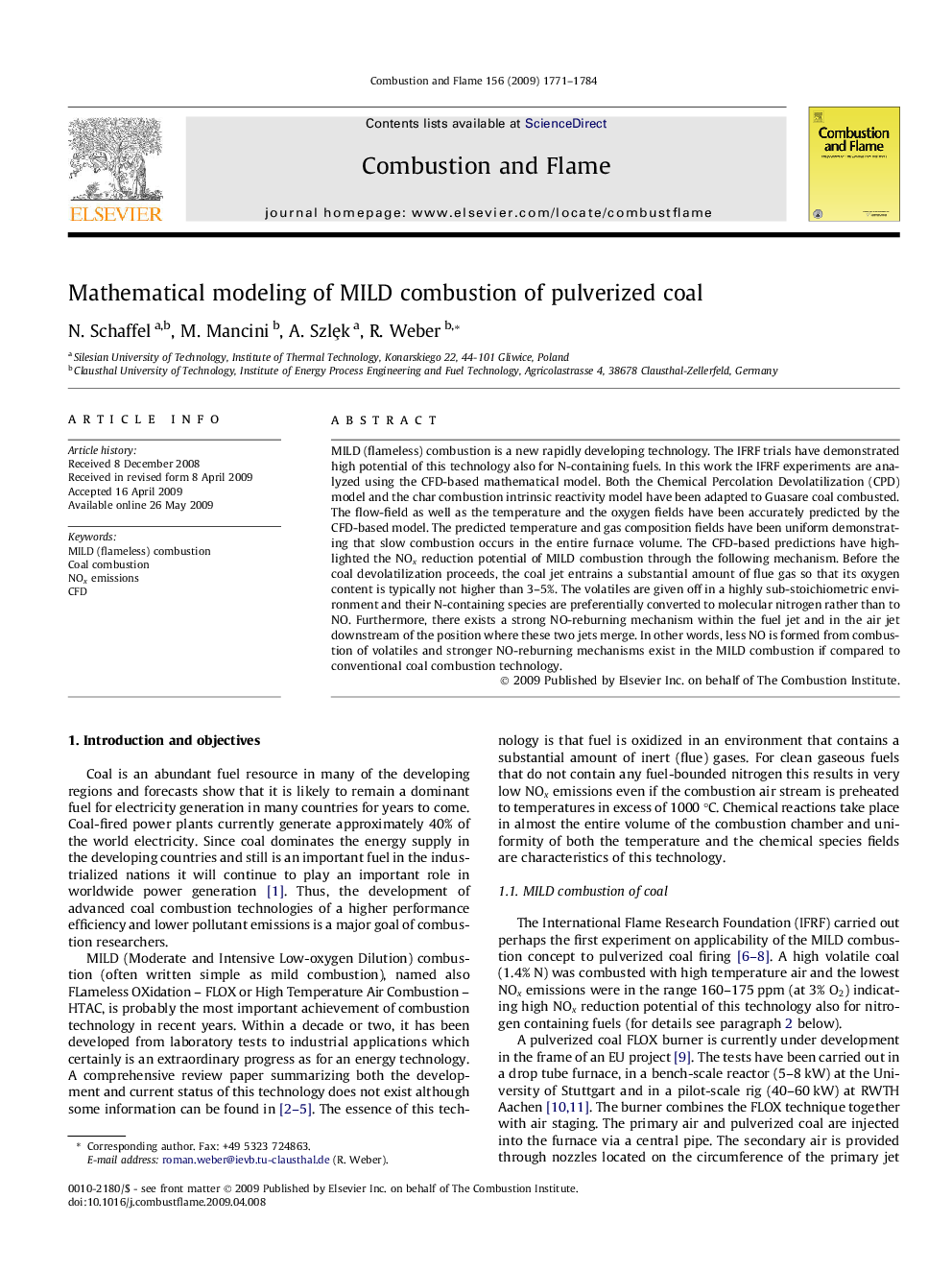| Article ID | Journal | Published Year | Pages | File Type |
|---|---|---|---|---|
| 166839 | Combustion and Flame | 2009 | 14 Pages |
MILD (flameless) combustion is a new rapidly developing technology. The IFRF trials have demonstrated high potential of this technology also for N-containing fuels. In this work the IFRF experiments are analyzed using the CFD-based mathematical model. Both the Chemical Percolation Devolatilization (CPD) model and the char combustion intrinsic reactivity model have been adapted to Guasare coal combusted. The flow-field as well as the temperature and the oxygen fields have been accurately predicted by the CFD-based model. The predicted temperature and gas composition fields have been uniform demonstrating that slow combustion occurs in the entire furnace volume. The CFD-based predictions have highlighted the NOxNOx reduction potential of MILD combustion through the following mechanism. Before the coal devolatilization proceeds, the coal jet entrains a substantial amount of flue gas so that its oxygen content is typically not higher than 3–5%. The volatiles are given off in a highly sub-stoichiometric environment and their N-containing species are preferentially converted to molecular nitrogen rather than to NO. Furthermore, there exists a strong NO-reburning mechanism within the fuel jet and in the air jet downstream of the position where these two jets merge. In other words, less NO is formed from combustion of volatiles and stronger NO-reburning mechanisms exist in the MILD combustion if compared to conventional coal combustion technology.
